
How to Use KY-003 Hall Sensor: Examples, Pinouts, and Specs
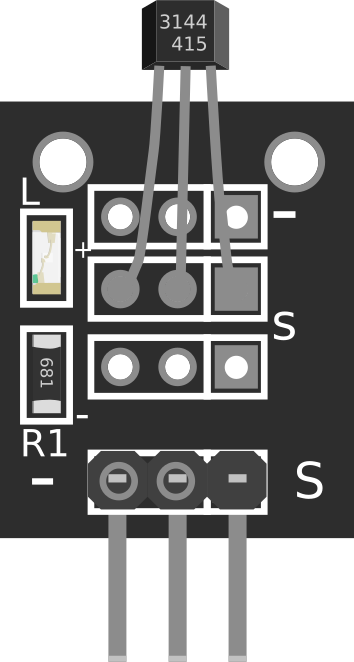
 Design with KY-003 Hall Sensor in Cirkit Designer
Design with KY-003 Hall Sensor in Cirkit DesignerIntroduction
The KY-003 Hall Sensor is a compact and versatile device designed to detect the presence of a magnetic field. It operates by outputting a digital signal when a magnetic field is detected, making it an essential component in various applications. The sensor is widely used in position sensing, speed detection, and proximity sensing. Its simplicity and reliability make it a popular choice for hobbyists, students, and professionals working on magnetic field detection projects.
Explore Projects Built with KY-003 Hall Sensor
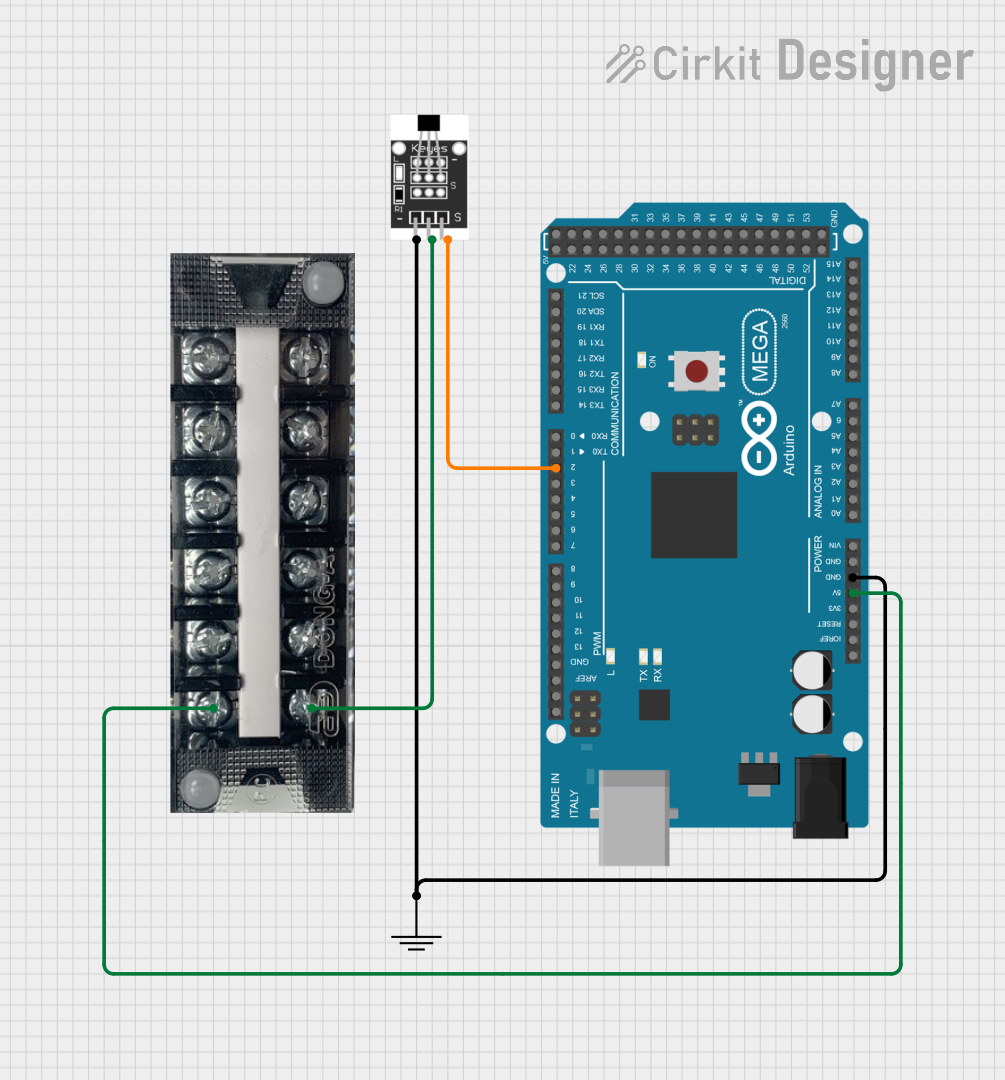
 Open Project in Cirkit Designer
Open Project in Cirkit Designer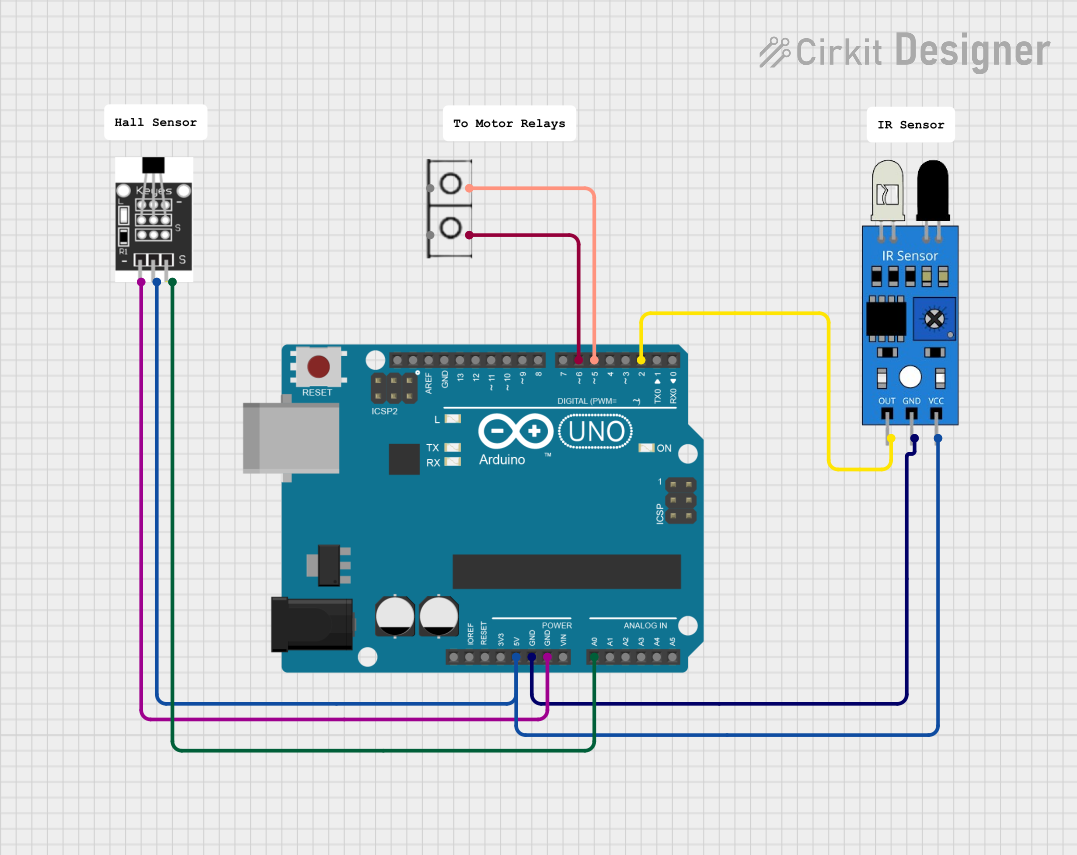
 Open Project in Cirkit Designer
Open Project in Cirkit Designer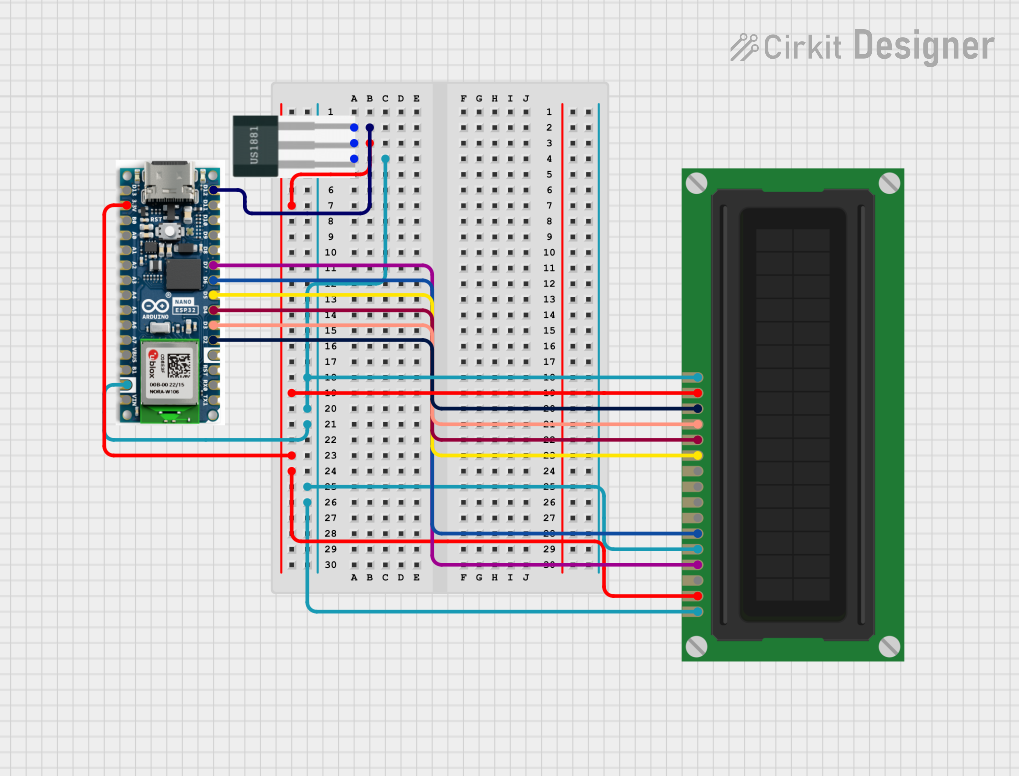
 Open Project in Cirkit Designer
Open Project in Cirkit Designer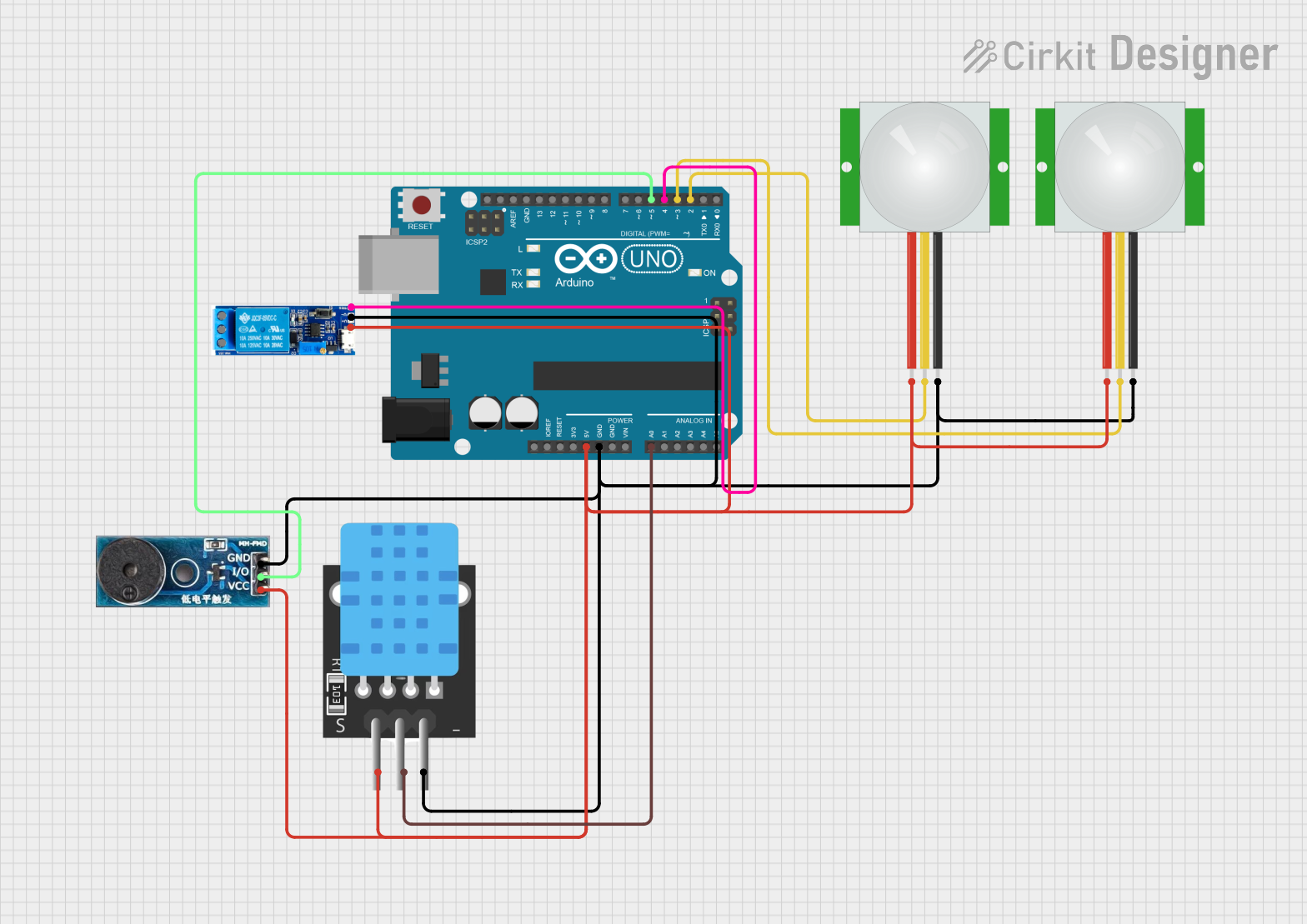
 Open Project in Cirkit Designer
Open Project in Cirkit DesignerExplore Projects Built with KY-003 Hall Sensor

 Open Project in Cirkit Designer
Open Project in Cirkit Designer
 Open Project in Cirkit Designer
Open Project in Cirkit Designer
 Open Project in Cirkit Designer
Open Project in Cirkit Designer
 Open Project in Cirkit Designer
Open Project in Cirkit DesignerTechnical Specifications
- Operating Voltage: 3.3V to 5V
- Output Type: Digital (High/Low)
- Current Consumption: 4mA (typical)
- Magnetic Sensitivity: Detects both North and South poles of a magnet
- Operating Temperature: -40°C to 85°C
- Dimensions: 18.5mm x 15mm x 7mm (approx.)
Pin Configuration and Descriptions
The KY-003 Hall Sensor module has three pins, as described in the table below:
| Pin Number | Pin Name | Description |
|---|---|---|
| 1 | Signal | Outputs a digital signal (HIGH when a magnetic field is detected, LOW otherwise). |
| 2 | VCC | Power supply pin (3.3V to 5V). |
| 3 | GND | Ground connection. |
Usage Instructions
How to Use the KY-003 Hall Sensor in a Circuit
Wiring the Sensor:
- Connect the VCC pin to a 3.3V or 5V power source.
- Connect the GND pin to the ground of your circuit.
- Connect the Signal pin to a digital input pin on your microcontroller (e.g., Arduino).
Magnetic Field Detection:
- When a magnetic field is detected, the sensor outputs a HIGH signal (logic 1).
- When no magnetic field is present, the sensor outputs a LOW signal (logic 0).
Example Circuit:
- Place the KY-003 Hall Sensor near a magnet to test its functionality.
- Use an LED or a microcontroller to observe the output signal.
Important Considerations and Best Practices
- Ensure the sensor is powered within its operating voltage range (3.3V to 5V).
- Avoid exposing the sensor to extreme temperatures or strong electromagnetic interference.
- For accurate detection, position the sensor perpendicular to the magnetic field.
- Use pull-down resistors if necessary to stabilize the signal output.
Arduino UNO Example Code
Below is an example code to interface the KY-003 Hall Sensor with an Arduino UNO:
// KY-003 Hall Sensor Example Code for Arduino UNO
// This code reads the digital output of the KY-003 Hall Sensor and turns on an LED
// when a magnetic field is detected.
const int hallSensorPin = 2; // KY-003 Signal pin connected to digital pin 2
const int ledPin = 13; // Onboard LED pin
void setup() {
pinMode(hallSensorPin, INPUT); // Set the hall sensor pin as input
pinMode(ledPin, OUTPUT); // Set the LED pin as output
Serial.begin(9600); // Initialize serial communication for debugging
}
void loop() {
int sensorState = digitalRead(hallSensorPin); // Read the sensor's output
if (sensorState == HIGH) {
// Magnetic field detected
digitalWrite(ledPin, HIGH); // Turn on the LED
Serial.println("Magnetic field detected!");
} else {
// No magnetic field detected
digitalWrite(ledPin, LOW); // Turn off the LED
Serial.println("No magnetic field.");
}
delay(100); // Small delay for stability
}
Troubleshooting and FAQs
Common Issues and Solutions
The sensor does not detect a magnetic field:
- Ensure the sensor is properly powered (3.3V to 5V).
- Verify the connections to the microcontroller or circuit.
- Check if the magnet is strong enough and positioned correctly.
Unstable or fluctuating output:
- Use a pull-down resistor on the signal pin to stabilize the output.
- Ensure there is no electromagnetic interference near the sensor.
No output signal:
- Confirm that the sensor is not damaged.
- Test the sensor with a different microcontroller or circuit.
FAQs
Q: Can the KY-003 Hall Sensor detect both poles of a magnet?
A: Yes, the KY-003 Hall Sensor can detect both the North and South poles of a magnet.
Q: What is the maximum distance for magnetic field detection?
A: The detection range depends on the strength of the magnet. Typically, the sensor works best within a few centimeters of the magnet.
Q: Can I use the KY-003 Hall Sensor with a 3.3V microcontroller?
A: Yes, the sensor operates within a voltage range of 3.3V to 5V, making it compatible with 3.3V microcontrollers like the ESP32.
Q: Is the KY-003 Hall Sensor suitable for outdoor use?
A: While the sensor can operate in a wide temperature range, it is not waterproof or weatherproof. Use appropriate enclosures for outdoor applications.